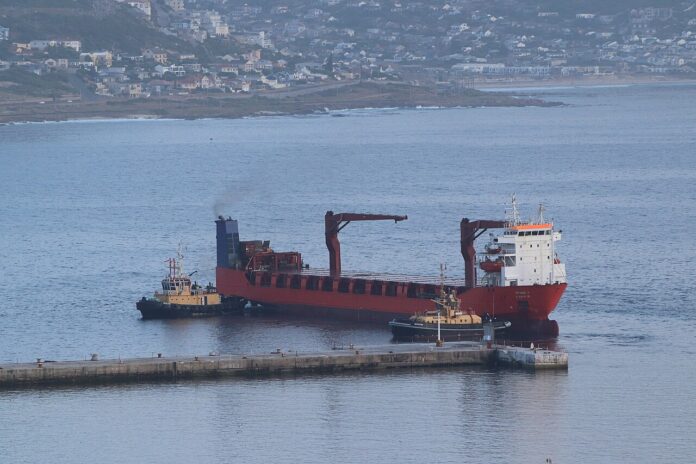New satellite imagery may give a snapshot of the deepening partnership between Moscow and Pyongyang.
A pair of cargo ships believed to have facilitated illicit munitions and oil transfers between Russia and North Korea were on Sunday captured docked next to stacks of containers in the other country’s port.
Russia has been supplying oil directly to North Korea, in violation of U.N. Security Council sanctions that cap shipments at 500,000 barrels per annum. North Korea, meanwhile, is suspected of shipping thousands of containers of munitions by sea, rail, and air to help replenish Russia’s stockpiles as it runs through resources more than two years into its war with Ukraine.
According to the Washington, D.C.-based think tank Center for Strategic and International Studies’ (CSIS) Korea Chair program, one of the satellite photos shows what is likely North Korea-flagged cargo ship Paek Yang San 1, which the U.N. has flagged over its involvement in illicit oil transfers to the Kim Jong Un regime.
The vessel can be seen docked at Russia’s far eastern Vostochny Port. Its arrival followed at least five such visits at the port by North Korean tankers, according to satellite imagery shared with the Financial Times by the British think tank the Royal United Services Institute.
The CSIS analysts were confident the other photo showed the Russian cargo ship Maria parked at Najin, a North Korean port city less than 20 miles from the Russian border.
The North Korean embassy in Beijing, China, and Russian foreign ministry did not immediately respond to written requests for comment.
The Maria is one of four Russian cargo ships sanctioned by the U.S. Treasury’s Office of Foreign Assets Control for alleged “proliferation of military equipment and munitions from the Democratic People’s Republic of Korea (North Korea) to Russia.”
Along with the Maria, the Lady R, the Angara, the Maia-1 made 32 port calls at the North Korean city Rason since the supply runs were first tracked last August.
Last month, analyst group NK Pro pointed to satellite imagery showing what appeared to be the Lady R at North Korea’s Rason Port, marking a return of Russian cargo ships after a month’s absence.
Though Russia has expanded its own munitions production to maintain its ground operations in Ukraine, fluctuating shortages continue.
South Korean Defense Minister Shin Won-sik told reporters in late February that North Korea had sent an estimated 6,700 shipping containers of ammunition to Russia. These potentially contained as many as 3 million 152-millimeter artillery shells, he said—a type of ammunition in particularly short supply.
Wikimedia Commons
Ukrainian defense intelligence agency Main Intelligence Directorate, also known as GRU, estimated in February that Russia had imported some 1.5 million artillery shells from its reclusive neighbor.
Pyongyang has been signaling stronger ties with Moscow while shelving attempts to lower decades-high tensions with Seoul.
Last month, the U.S. and South Korea launched a joint task force to stem the flow of resources fueling Pyongyang’s nuclear and ballistic missile programs. Ways to counter smuggled oil shipments, including from Russia, were discussed at the inaugural meeting.
Uncommon Knowledge
Newsweek is committed to challenging conventional wisdom and finding connections in the search for common ground.
Newsweek is committed to challenging conventional wisdom and finding connections in the search for common ground.


